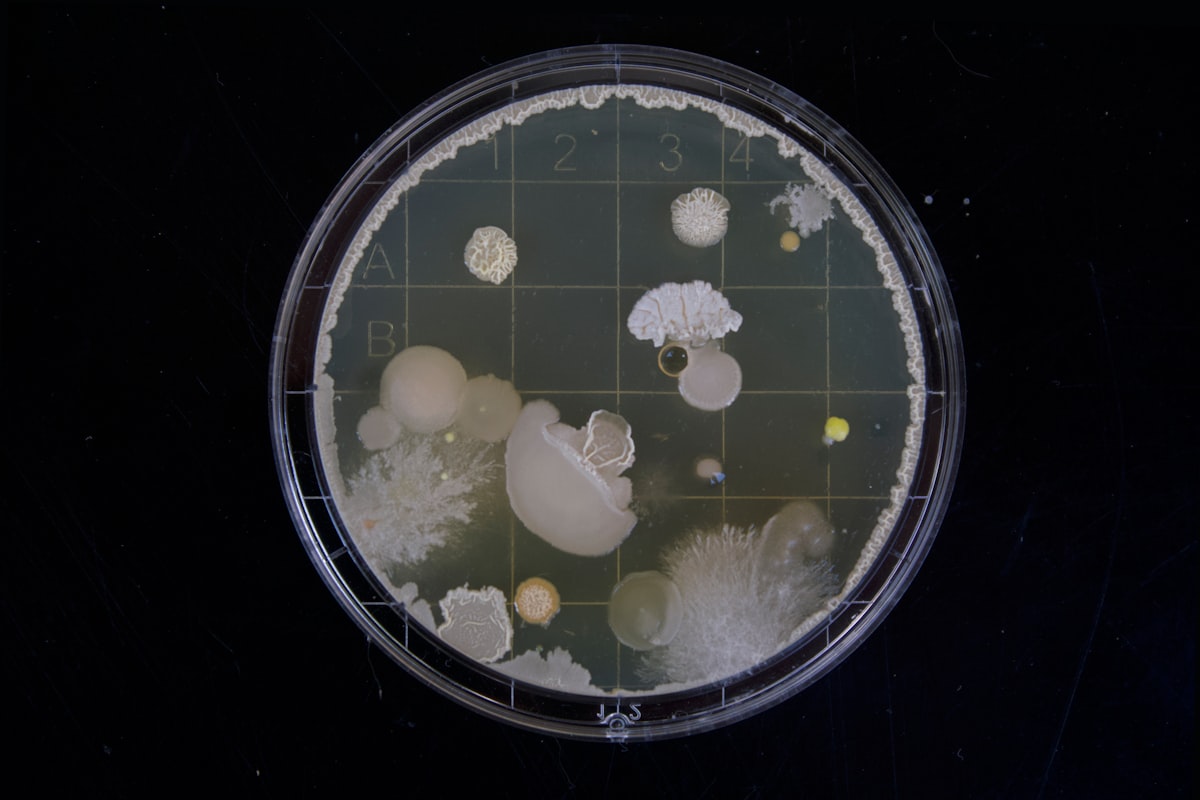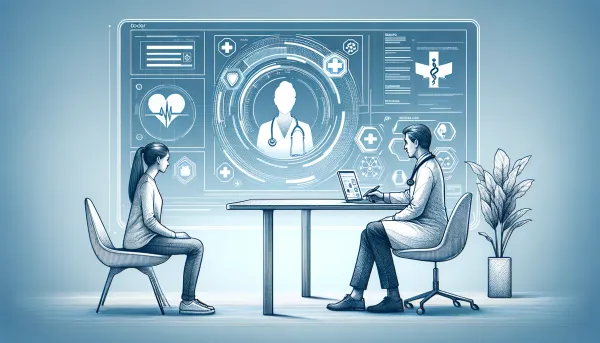Transitioning to Digital Health and Gut Microbiota
This week I picked something connected to tech (again) and an area that is receiving more and more traction in the scientific community - gut microbiota.

This week I picked something connected to tech (again) and an area that is receiving more and more traction in the scientific community.
We've all experienced that the transition to a more digital life is faster than ever. Schools are the most evident example, but the same goes for healthcare.
Gut microbiota has been on my "radar" for quite some time. I remember reading about using it for treatment a couple of years ago in the German Spiegel. Now, I finally got to put a little more time into it.
I honestly think this is one of the finest issues to date. But as always, your feedback, recommendations and opinion is always welcomed.
Transitioning to digital health
You may have noticed by now that I’m a supporter of the adoption of tech in medicine and healthcare. It’s something we breeze over in medical school, but should address in more detail in the future. Then again, it’s such a fast-changing field that it’s perhaps better to follow these topics on our own.
We hear that there are hospital shortages everywhere. Nurses and doctors are doing extra shifts. More staff are needed at entrances to the hospitals. The Verge published a piece on how technology can help healthcare professionals.
Firstly, there are UV cleaning bots. They mention a company from Dublin, whereas I included a Slovenian-based one (UVC Solutions) a few weeks ago. Such robots are truly game-changers. The hospital staff would have to clean each room with a disinfectant for about an hour. The UV light does that in 15 minutes, without staff being present. This creates more time for staff to devote to patients and increases the number of procedures in hospitals. It’s a win-win.
Secondly, in Belgium robots are used in the frontline. They check patients entering the hospital for temperature and verify that they’re wearing a mask. Again, more staff where they’re needed and the robot doesn’t get sick.
Thirdly, because of the pandemic, med-tech is moving at 5x the normal rate. It has cleared the way to innovations and projects.
Let’s say these innovations and ideas were based for hospital use. On the other side, we’re experiencing a revolution in “remote” health and telemedicine. I’ve already written about Babylon Health and how they’re revolutionising health care in Rwanda.
Another such company is called Span and their approach is slightly different. They’re focused on creating an “online practice” to solve health problems anywhere. I particularly like that they focus on solving problems with lifestyle changes and not by adding medication. Span offers an app for Android and iPhone over which anyone can book consultations they need. Patients can connect with professionals and design a plan to change their lifestyle and improve their health. For example, it’s well-known that type-2 diabetes can be managed without insulin. Their end-goal is to offer their services to companies. Just as they pay for employees being active, they’d pay for them having a healthy lifestyle.
A third perspective on improving the response to the virus with technology are contact tracing apps. They may receive a lot of heat due to privacy concerns. However, this is out best shot at stopping the virus and avoiding further lockdowns. Everyone has a phone in their pockets. In my opinion, privacy cannot be an argument against them. We already willingly send personal information to Apple, Google and the likes of it. A contact tracing app is now a problem? Something that would truly benefit everyone around us and society as a whole? Of course, privacy is of utmost importance. That’s why countries such as France are developing their own apps, without the help of Google and Apple. Plus they’re making it on a voluntary basis.
The final perspective I want to offer is about online scientific conferences. Many conferences scheduled for the first half of the year have 100% migrated online. Those scheduled for the second half are still deciding what to do. Scientists love it. Firstly, it allows for more people to be present at it. For example, the March meeting of the American Physical Society featured more than 7000 scientists from all around the world. Secondly, the scientists attending them are saving a huge amount of time. Those with little children can stay at home. Thirdly, they reduce their carbon footprint, something a lot of them are fighting for. All of this calls for at least having the option of participating online.
If healthcare was reluctant to adopt new technologies before the pandemic, it wants them to stay and improve after it.
Gut Microbiota
Our gut microbiota is receiving increasing attention from all walks of life. On the one hand, it’s considered a whole organ. On the other hand, it even presents an option for treating diseases.
Let’s first clarify some basics. Until now, I didn’t know there’s a difference between microbiota and microbiome. However, the microbiome refers to the catalogue of these microbes and their genes. Microbiota, on the other hand, is the total microbial taxa associated with human beings (bacteria, viruses, fungi, etc.). For a more detailed explanation of what follows, read this paper.
For the sake of the argument: I’m not a vegan nor a vegetarian. I love my steaks very much. I’m simply interested in the effects these diets have on our bodies and how they can be beneficial to our health.
There are a lot of effects the transition to a plant-based diet has on our body. I outlined them in the 6th issue of Sunday MashUp. We can look at the effect on microbiota from 2 aspects. Firstly, a ratio between Bacteroidetes and Firmicutes phyla and secondly the change in enterotype.
In people that eat predominantly plant-based food, the percentage of Bacteroidetes can be 4 times larger than in people, who eat animal-based food. The mentioned ratio is increased. This is interesting because an increased ratio is connected to a lower BMI. The reason behind it may be that less energy is harvested from the food that enters our digestive tract. This claim is not universal to all humans, though. It’s largely dependent on race, geographical differences and age.
There are three basic bacterial enterotypes:
- Genus Prevotella: protective and anti-inflammatory function (this is what we want)
- Genus Bacterioides: pro-inflammatory function and linked to some pathological conditions such as metabolic syndrome.
- Genus Ruminococcus: less evident function, but still interesting.
The change in enterotype is also interesting to observe in response to a plant-based diet. The amount Prevotella genus increases, whereas Bacteroides genus increases in a predominantly animal-based diet. If we eat a lot of fruit, vegetables and walnuts, the amount of Ruminococcus genus increases. Its function is to degrade complex carbohydrates, including cellulose and starch (dietary fibres). A product of dietary fibre digestion is butyrate, which acts as an anti-inflammatory compound in the body. Additionally, a lot of Ruminococcus has been linked to lower arterial stiffness, which is a predictor of cardiovascular disease.
With a change in our diet, we can greatly affect our microbiota and lower the risk of some diseases. On the other side, there are also experimental treatments with bacteria that can help us fight against different diseases. This article from Nature is a great summary.
There are different approaches to this. About a decade ago there was a clinical trial that transplanted gut microbiota from healthy individuals to those with recurring gut infections. The treatment was so effective that it was no longer ethical to continue it. The reason was that control group received antibiotics (which disrupt gut microbiota).
The second approach is genetically modifying bacteria to trigger different responses in our gut. This is used to treat metabolic conditions, kill pathogens or activate the immune response.
And the third approach is again to modify the bacteria in such a way that they bind to cancer cells in the gut. When they do so, they start secreting enzymes that help kill these cells. These enzymes then convert a naturally occurring substance into one that kills cancer. If you think about it, this is a very effective form of treatment since the target are only cancerous cells, without damaging any other tissue. Even more mind-blowing is to modify the bacteria to produce therapeutic molecules in appropriate conditions.
All of this is already happening at least in clinical trials. Once fully tested and approved, this should be huge.




